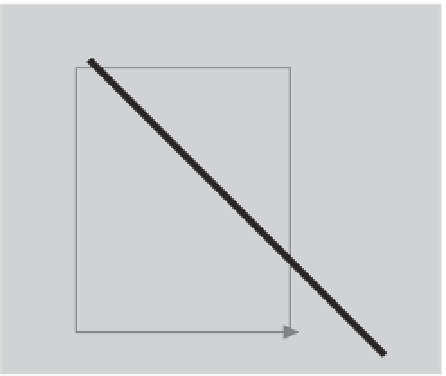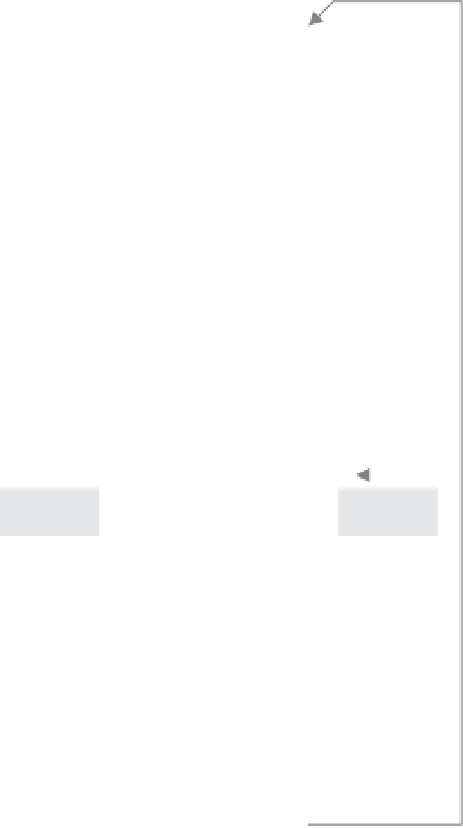Environmental Engineering Reference
In-Depth Information
Emissions of
S and N
Establish
Objectives
(based on desired use
of waterbody)
Institutional
concerns
Regulatory
concerns
Atmospheric
transport and
deposition
Terrestrial
ecosystem
Assess factors
affecting achievement
of objectives
Atmospheric
transport and
deposition
Runoff
Water demand
Problems/conflicts
Land usage
Water quality
Aquatic
ecosystem
Identify available
remedial measures
to achieve objectives
Figure 18.2
The direct and indirect steps linking
emissions of SO
2
and NO
x
and deposition to aquatic
ecosystems. Note that the catchment area (terrestrial
ecosystem) and the runoff into lakes are more important
causes of lake acidifi cation than direct, atmospheric
deposition. (From Steinberg and Wright 1994. Reproduced
by permission of John Wiley and Sons Ltd.)
Sociological
concerns
Technical
concerns
Assess cost-effectiveness
of alternatives
in relation to
achieving objectives
Ecological
concerns
Economic
concerns
Selection of
most feasible
remedial measures
emissions are linked via runoff from terrestrial ecosys-
tems and through direct transport and deposition in
aquatic ecosystems (Figure 18.2). In farms with inten-
sive cropping and/or animal husbandry, nitrate is
formed from the large amounts of ammonium emitted.
The overall nitrifi cation reaction leading to nitrate for-
mation (NH
4
+
+ 2 O
2
→ N O
3
−
+ H
2
O + 2 H
++
) then acidi-
fi es the watercourses. The buffering capacity of lake
water against acidifi cation is determined by the con-
centration of bicarbonate ions. The acidifi cation pro-
cess in lakes occurs in three main steps, related to the
decrease in pH caused by lowering of the buffering
capacity of water (Mason 2002). In the fi rst main step,
bicarbonate (HCO
3
−
) buffers the input of strong acids
(H
+
+ HCO
3
−
→ H
2
O + C O
2
). The pH remains generally
above 6, and the plant and animal communities remain
stable as the lake loses alkalinity. In the second step,
transition lakes, the bicarbonate buffer may be lost
during long periods of acid inputs, resulting in large
fl uctuations in pH and periodic fi sh kills. In the fi nal
stage, acid lakes, the loss of alkalinity is complete and
the lake retains a low but stable pH, usually below 5,
while metal levels, especially aluminium, may be ele-
vated, resulting in the extermination of fi sh popula-
tions. Lakes that have a high buffering capacity will
never reach the permanent acid state. Limestone in a
drainage basin may help prevent acidifi cation consid-
Implementation
of remedial
programmes
Assessment
of results
Figure 18.1
Schematic representation of a recommended
decision-making process for the selection and
implementation of eutrophication control programmes in
lakes. (From Rast and Holland 1988. Reproduced by
permission of Ambio.)
lakes, second only to eutrophication. The hyperacidity
of rainwater (pH < 4.7) in the affected areas is due
mainly to polluted air masses containing S and N com-
pounds (SO
2
and NO
x
), released from the burning of
fossil fuels, and their transport by winds often originat-
ing at great distances from the place of deposition.
These compounds are transformed by photo-oxidation
to sulphuric acid (ca. 70%) and nitric acid (ca. 30%)
before they eventually fall to Earth as 'acid rain'. These




















